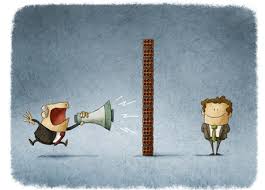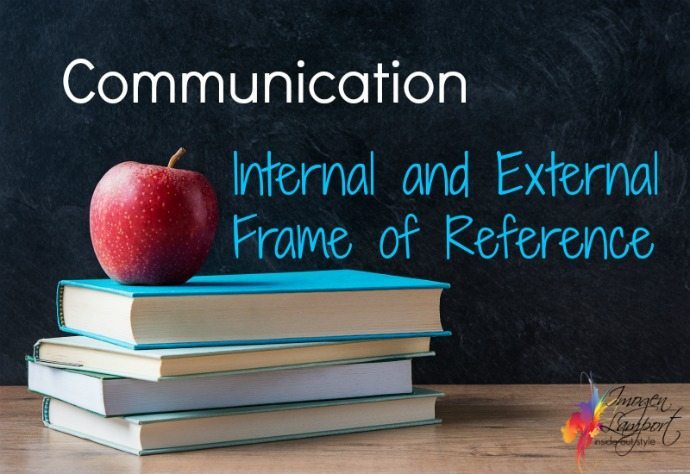Internal Barriers of Communication
Internal barriers of communication include territorialism, dismissiveness, subjective judgment, and the inability or unwillingness to differentiate perception from reality. These barriers can hinder effective communication and lead to misunderstandings and conflicts.
They often arise from individuals who struggle to accept their fallibility and draw unfair and negative conclusions about others. In extreme cases, such as borderline personality disorder, individuals may deny their own behavior and blame others. These internal barriers can create a chaotic and unstable environment, making it difficult to resolve conflicts and maintain healthy relationships.
Understanding and addressing these barriers is crucial for effective communication.
Understanding Internal Barriers Of Communication
Internal barriers of communication refer to obstacles within ourselves that hinder effective communication. Examples include territorialism, dismissiveness, judging others based on our own standards, inability to separate perception from reality, and unwillingness to accept our own fallibility. These barriers can disrupt relationships and prevent resolution in conflicts.
Definition Of Internal Barriers Of Communication:
Internal barriers of communication refer to the obstacles or hindrances that occur within an organization or group that impede effective communication between individuals. These barriers can arise from personal attitudes, beliefs, and behaviors, as well as structural and cultural factors within the organization.
Examples Of Internal Barriers In Communication:
- Lack of transparency and trust: When there is a lack of trust or transparency within an organization, employees may withhold information or modify the messages they communicate, which can lead to misunderstandings and ineffective communication.
- Poor listening skills: Ineffective listening can hinder effective communication as it may result in misinterpretations, missed details, and the inability to fully understand the message being conveyed.
- Language barriers: Differences in language or jargon used within an organization can create communication barriers, making it difficult for individuals from different departments or backgrounds to understand each other.
- Hierarchical structures: Organizations with rigid hierarchies may experience communication barriers as individuals may feel hesitant to voice their opinions or concerns to higher-level employees or authority figures.
- Cultural differences: Different cultural backgrounds and norms can impact communication within an organization. Variations in communication styles, non-verbal cues, and perceptions of hierarchy can contribute to misunderstandings and misinterpretations.
Importance Of Identifying And Addressing Internal Barriers:
- Improve collaboration: Identifying and addressing internal barriers in communication can foster collaboration and teamwork within an organization. By breaking down these barriers, employees can work together more effectively, leading to better outcomes and productivity.
- Enhance employee satisfaction: Clear and effective communication can contribute to higher employee satisfaction levels. Addressing internal barriers ensures that employees feel heard, valued, and understood, which can lead to improved job satisfaction.
- Increase organizational effectiveness: When internal barriers are identified and addressed, organizations can operate more efficiently and effectively. Improved communication leads to better decision-making, problem-solving, and overall performance.
- Minimize conflicts and misunderstandings: Effective communication helps minimize conflicts and misunderstandings within an organization. By being proactive in identifying and addressing internal barriers, organizations can prevent or resolve conflicts that arise due to communication breakdowns.
- Foster innovation and creativity: When communication barriers are addressed, it creates an environment where diverse ideas and perspectives can be shared openly. This fosters innovation and creativity within the organization, leading to growth and success.
By understanding the definition of internal barriers of communication, recognizing examples of these barriers, and acknowledging the importance of addressing them, organizations can strive towards better communication practices and improve overall outcomes.
Psychological Barriers
Psychological barriers, as internal barriers of communication, include territorialism, dismissiveness, and the tendency to judge others based on oneself. These barriers can hinder effective communication by causing misunderstandings, lack of trust, and an inability to separate perception from reality. Additionally, they can lead to personality disorders such as borderline personality disorder, which further complicates relationships.
Psychological barriers can significantly impact communication within any organization or interpersonal relationship. These barriers arise from personal perceptions, biases, stereotypes, ego, and self-esteem issues. Overcoming these internal barriers is crucial for effective communication to take place. Let’s explore each of these factors in more detail:
Impact Of Personal Perceptions On Communication:
- Personal perceptions are subjective interpretations of reality that individuals have based on their own experiences, backgrounds, and beliefs.
- These perceptions can often create misunderstandings and miscommunications, as what one person perceives may not align with the intended message of another.
- When personal perceptions are not acknowledged or understood, they can hinder effective communication and lead to conflict or misinterpretation.
Overcoming Biases And Stereotypes:
- Biases and stereotypes are preconceived notions and beliefs that individuals hold about certain groups of people.
- These biases can lead to discriminatory behavior and can impede open and honest communication.
- Overcoming biases and stereotypes requires self-awareness and an active effort to challenge and question these preconceptions.
- By recognizing and confronting biases, individuals can create a more inclusive and respectful communication environment.
Dealing With Ego And Self-Esteem Issues:
- Ego and self-esteem issues can create barriers to effective communication by fostering defensiveness and a refusal to listen to others’ perspectives.
- Individuals with inflated egos may disregard or dismiss the opinions and ideas of others, hindering open dialogue and collaboration.
- Overcoming ego and self-esteem issues requires self-reflection, empathy, and humility. It’s crucial to recognize that everyone’s input is valuable and that no one person has all the answers.
- By addressing these barriers, individuals can foster a more inclusive and supportive communication culture.
Psychological barriers have a significant impact on communication. It is necessary to recognize and address personal perceptions, biases, stereotypes, ego, and self-esteem issues to foster effective communication within organizations and relationships. By overcoming these internal barriers, individuals can promote understanding, collaboration, and mutual respect.
Emotional Barriers
Internal barriers of communication, such as territorialism, dismissiveness, and the inability to differentiate perception from reality, can hinder effective communication. These barriers can be caused by personal insecurities and emotional factors, leading to misunderstandings and a lack of trust in relationships.
Overcoming these barriers requires self-awareness and willingness to address and work through one’s own emotional barriers.
The Role Of Emotions In Communication Breakdowns:
- Emotions play a crucial role in communication breakdowns, as they can cloud judgment, distort perception, and hinder effective understanding between individuals.
- When emotions are heightened, individuals may struggle to listen actively, speak rationally, or empathize with others, leading to misunderstandings and conflict.
- Emotional barriers in communication can arise from anger, fear, frustration, stress, or even personal biases and prejudices.
Managing Emotions For Effective Communication:
- Recognizing and managing emotions is essential for overcoming emotional barriers in communication and fostering productive interactions.
- Developing self-awareness is the first step in understanding one’s emotions and how they can impact communication. It involves identifying triggers and patterns in emotional responses.
- Practice active listening, which involves attentively listening to understand the speaker’s perspective without interrupting or forming judgments.
- Responding thoughtfully instead of reacting impulsively allows for better communication. Taking a step back, reflecting, and calmly expressing emotions can prevent misunderstandings and keep conversations productive.
- Use assertive communication techniques to express emotions and needs confidently while respecting others’ viewpoints and boundaries.
Building Emotional Intelligence:
- Emotional intelligence refers to the ability to recognize, understand, and manage emotions effectively, both in oneself and in others.
- Developing emotional intelligence enables individuals to navigate emotional barriers in communication and build stronger relationships.
- Self-regulation is an essential aspect of emotional intelligence, involving the ability to control impulses, manage stress, and adapt to different emotional situations.
- Empathy plays a vital role in effective communication by understanding others’ feelings and perspectives and responding with compassion.
- Improving emotional intelligence can be done through self-reflection, practicing mindfulness, seeking feedback, and learning from challenging communication experiences.
Remember that effective communication goes beyond just conveying information—it involves understanding emotions and fostering a connection between individuals. By managing emotions and developing emotional intelligence, we can overcome emotional barriers and build stronger, more meaningful communication channels.

Credit: fellow.app
Cultural Barriers
Internal barriers of communication, such as territorialism and dismissiveness, hinder effective communication by causing individuals to judge others based on their own standards and prevent the delineation of perception from reality. These barriers can lead to relationship issues and make it difficult to resolve conflicts.
Understanding Cultural Differences In Communication:
- Different cultures have unique communication styles and norms that can create barriers when interacting with individuals from different backgrounds.
- Cultural differences can affect verbal and non-verbal communication, leading to misunderstandings and misinterpretations.
- Understanding cultural differences can help individuals adapt their communication styles to effectively convey their message and avoid conflicts.
Language Barriers And Their Impact:
- Language barriers can be a major internal barrier to effective communication, especially in multicultural or multilingual settings.
- When individuals do not share a common language, it can hinder the exchange of information and ideas.
- Miscommunication due to language barriers can lead to confusion, frustration, and ineffective collaboration.
Respecting Cultural Norms And Values:
- Respecting cultural norms and values is essential for effective communication in diverse environments.
- Each culture has its own set of norms, values, and beliefs that shape their communication behaviors.
- Being aware of and respectful towards cultural norms can help create a more inclusive and productive communication environment.
Remember to provide a brief 1-2 sentence paragraph introducing the bullet points.
Organizational Barriers
Internal barriers of communication refer to obstacles within an organization that hinder effective communication. These barriers can include territorialism, dismissiveness, personal biases, poor listening skills, lack of interest in the message, fear, mistrust, and negative attitudes. Overcoming these barriers is essential for efficient communication within a team or organization.
: Structure And Hierarchy As Barriers To Communication
In any organization, the structure and hierarchy can act as obstacles to effective communication. Here are a few points to consider:
- Complex structure: A complex organizational structure with multiple layers of management can hinder communication flow. The formal chain of command may result in delays and misinterpretation of information.
- Top-down communication: When communication flows predominantly from the top-down, it creates a hierarchical barrier. Lower-level employees may feel hesitant to express their ideas or concerns, fearing a negative response from higher-ups.
- Lack of feedback: In organizations where feedback is not encouraged or valued, employees may hesitate to provide input or make suggestions. This lack of two-way communication stifles innovation and hampers collaboration.
- Limited access to information: Employees at lower levels may face barriers due to limited access to relevant information. Without access to important data and updates, they may struggle to make informed decisions or contribute effectively to the organization.
To overcome these barriers, organizations can take several steps:
- Establish an open-door policy, encouraging employees at all levels to share their ideas and concerns.
- Foster a culture of transparency, where information is readily shared and accessible to all team members.
- Encourage two-way communication channels, such as regular feedback sessions, surveys, and open forums for discussion.
- Implement cross-functional teams and collaborative projects to break down silos and promote interdepartmental communication.
- Provide training and development programs to enhance communication skills and create awareness about the importance of effective communication within the organization.
By addressing these barriers and promoting a culture of open and transparent communication, organizations can improve collaboration, innovation, and productivity.
Technological Barriers
Internal barriers of communication can include technological barriers that hinder effective communication within an organization. These barriers can include issues with outdated or incompatible technology, poor internet connectivity, and lack of proper communication tools. Overcoming these technological barriers is crucial for promoting efficient and seamless communication among team members.
Impact Of Technology On Communication:
Technology has revolutionized how we communicate, making it faster and more efficient in many ways. However, it also presents its own set of challenges and barriers to effective communication. Here are some key points to consider:
- Inconsistencies in communication platforms: With the wide variety of communication tools available, such as email, instant messaging, video conferencing, and social media, there can be inconsistencies in how messages are conveyed. This can lead to misunderstandings and misinterpretations.
- Lack of non-verbal cues: Technology-mediated communication lacks non-verbal cues like facial expressions, body language, and tone of voice. This can make it difficult to fully understand the intended meaning behind a message, leading to confusion or miscommunication.
- Over-reliance on technology: Technology has made communication convenient and accessible, but it can also lead to over-reliance. People may become dependent on technology to communicate, neglecting face-to-face interactions and interpersonal skills.
Dealing With Information Overload:
The digital age has brought an abundance of information, often resulting in information overload. This overload can hinder effective communication. Here are some ways to cope:
- Filtering information: Use filters and prioritization techniques to focus on essential information. Identify the most relevant sources and channels for your communication needs.
- Limit multitasking: Multitasking can lead to decreased attention and comprehension. Focus on one task at a time to ensure clear communication.
- Effective time management: Set specific time limits for tasks and allocate dedicated time for communication. This helps prevent overwhelm and allows for efficient processing of information.
Leveraging Technology For Effective Communication:
While technology can present challenges, it also offers opportunities to enhance communication. Here’s how you can leverage technology for effective communication:
- Use collaborative tools: Utilize project management and collaboration tools to streamline communication within teams. These tools enable easy sharing of information, feedback, and updates.
- Embrace video conferencing: Video conferencing provides a more personal touch to communication. It allows for visual cues, promotes engagement, and strengthens relationships, especially when face-to-face meetings are not possible.
- Choose the right communication tools: Select tools that align with your communication goals. Consider factors such as simplicity, accessibility, and compatibility with existing systems.
Overall, understanding and addressing the technological barriers in communication can lead to more effective and efficient interactions. By utilizing technology wisely and adapting to its challenges, we can enhance our communication skills and stay connected in today’s digital world.
Effective Strategies To Overcome Internal Barriers
Internal barriers of communication refer to obstacles that hinder effective communication within an organization. These barriers can include territorialism, dismissiveness, self-centeredness, and an inability to differentiate perception from reality. Overcoming these barriers requires individuals to be open-minded, willing to listen, and able to separate personal biases from objective communication.
Improving Active Listening Skills:
- Pay attention to the speaker without distractions to ensure you grasp the complete message.
- Maintain eye contact to show interest and engagement.
- Ask clarifying questions to confirm understanding.
- Reflect on what the speaker said before responding.
- Practice empathy and put yourself in their shoes to better understand their perspective.
Enhancing Self-Awareness And Empathy:
- Reflect on your own communication style and patterns.
- Identify your strengths and weaknesses in communication.
- Develop empathy by actively seeking to understand others’ emotions and experiences.
- Practice self-reflection to identify any biases or assumptions that may hinder effective communication.
- Cultivate a growth mindset, always aiming to improve your communication skills.
Creating A Culture Of Open Communication:
- Foster an environment where everyone feels comfortable expressing their thoughts and opinions.
- Encourage open dialogue by actively listening and valuing diverse perspectives.
- Establish clear communication channels and encourage feedback.
- Provide training and workshops on effective communication for all employees.
- Lead by example, demonstrating open and transparent communication in your own interactions.
By implementing these strategies, individuals and organizations can overcome internal barriers to communication, fostering a more collaborative and productive work environment.
Frequently Asked Questions On Internal Barriers Of Communication
What Are The Internal Barriers To Communication?
Internal barriers to communication can hinder effective communication within an organization. These barriers include territorialism, dismissiveness, and the tendency to judge others based on one’s own standards. Additionally, the inability or unwillingness to separate perception from reality can also create barriers to communication.
For example, individuals who are averse to accepting their fallibility may unfairly and negatively perceive others, making it difficult to establish trust and maintain healthy relationships. Another internal barrier is borderline personality disorder, where individuals deny their own conduct and attribute it to others, causing confusion and preventing resolution in conflicts.
Overcoming internal barriers requires self-awareness, empathy, and a willingness to challenge one’s own biases and assumptions. By addressing these internal barriers, organizations can foster a more open and effective communication culture.
What Are Some Examples Of Internal Barriers?
Internal barriers in communication can include territorialism, dismissiveness, inability to separate perception from reality, and using one’s own self as the standard for judging others. These barriers can hinder effective communication by preventing individuals from accepting their fallibility and drawing unfair conclusions about others.
Additionally, some individuals may develop borderline personality disorder as a way to escape from acknowledging their unfair behavior. This disorder can lead to irrational and changing logic, making it difficult to resolve conflicts or establish healthy relationships. Other internal barriers may include fatigue, poor listening skills, lack of interest, fear, mistrust, negative attitudes, personal problems, and emotional factors.
These barriers can impede the exchange of information and ideas, making it essential to address and overcome them for successful communication.
What Are 10 Examples Of Internal Barriers?
Internal barriers refer to obstacles within an individual that hinder effective communication. Here are 10 examples of internal barriers: 1. Fatigue 2. Poor listening skills 3. Negative attitude towards the sender or information 4. Lack of interest in the message 5. Fear and mistrust 6. Past experiences influencing perception 7.
Problems at home affecting focus 8. Lack of common experiences with the sender 9. Emotions interfering with understanding 10. Personal biases and judgments affecting interpretation. These internal barriers can prevent effective communication by distorting or blocking the intended message. It is important to recognize and overcome these barriers to promote clear and meaningful communication.
By improving listening skills, maintaining an open mindset, and managing emotions, individuals can enhance their communication abilities and build stronger connections with others.
What Are Internal Distractions Barriers To Communication?
Internal distractions barriers to communication refer to the factors within an individual that hinder effective communication. These barriers can include territorialism, dismissiveness, self-centeredness, and the inability or unwillingness to separate perception from reality. People who struggle with accepting their fallibility may unfairly judge and negatively perceive others, which can lead to conflicts and difficulties in communication.
Additionally, individuals with borderline personality disorder may exhibit inconsistent and irrational behavior, making it challenging to resolve conflicts. Internal distractions can also include fatigue, poor listening skills, negative attitudes, lack of interest, fear, mistrust, and personal emotions. These barriers prevent the message from being effectively received and understood.
It is important to address and overcome these internal distractions to promote clear and effective communication.
Conclusion
Ng communication. When individuals have fear, lack of confidence, or a negative attitude, it hinders their ability to effectively communicate and understand others. Language differences can also create internal barriers, as misinterpretations and misunderstandings can occur. These internal barriers not only limit the exchange of information but also hinder the development of strong relationships.
To overcome internal barriers, it is important to address and acknowledge these factors. Building self-confidence, developing effective listening skills, and promoting open-mindedness can help improve communication. Creating a supportive and inclusive environment where individuals feel comfortable expressing themselves also plays a crucial role in overcoming internal barriers.
Internal barriers of communication can significantly impact the quality of communication and hinder the formation of meaningful connections. By recognizing and addressing these barriers, individuals and organizations can foster a positive and productive communication environment. Effective communication is essential for personal and professional growth, and overcoming internal barriers is a crucial step towards achieving this goal.




